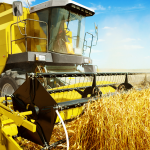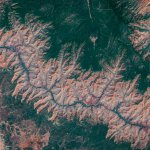How NGOs can leverage AI without breaking the bank

When you think of the kinds of organizations leveraging artificial intelligence (AI), non-government or non-profit organizations (NGOs) do not spring to mind.
It’s the big tech and VC-backed firms that are often seen pushing the boundaries of what’s possible with AI. Limited in resources and employees’ time, investment in AI may be seem to be out of the reach of NGOs.
However, there are examples of non-profit organizations leveraging AI to achieve amazing results. Just take a look at Wildbook, an open source platform developed by conservation tech nonprofit, Wild Me.
Wildbook uses AI to identify individual animals by their unique coat patterns or other hallmark features— they help conservationists across the world identify endangered species like cheetahs, whale sharks, and giraffes.
AI is not— and should not— be reserved for only the most profitable enterprises. It can help drive innovation within NGOs and help solve many of the toughest environmental and social problems we face today.
According to this Salesforce report, the use of AI by non-profits is projected to grow 361 percent in the next two years.
But the above example is more of an exception than the norm. The reality is that most NGOs do not tap into AI or they don’t know where to start. When enterprises with multi-million-dollar budgets are failing to use AI effectively, how can NGOs do this with minimal resources?
Powerful use cases
NGOs should start with the need for AI and ask themselves what they want to do.
Do they require automation? AI may be able to spot wildlife using computer vision to identify animals and track their movements, but it can also help non-profits optimize their internal processes and channelize precious resources— it can help them decide where to build a school or how to optimize land usage .
NGOs can also use AI to predict future events, such as poaching or deforestation, based on past data. This allows them to make proactive decisions and prevent incidents before they occur.
Terrafuse, for example, predicts forest wildfires by combining historical data with real-time satellite imagery and simulations. Non-profits can use published reports like this one from McKinsey to identify where their need falls.
Gathering the data
Data is a prerequisite for AI. After identifying their use case, NGOs need to find creative ways to gather relevant data to train their AI algorithms.
For example, an organization looking to train AI on identifying elephants, for example, can use curated open-sourced datasets or publicly available tourist photos.
Once they have the data, they need to label it. This can also be done with public help from crowdsourcing. Refunite, for example, developed an app that allows those who have been uprooted by conflict to earn money by ‘training’ AI algorithms from their smartphones.
YOU MIGHT LIKE

IBM is acting on an agricultural data mass
Finding the resources
NGOs can fast-track their AI model development by looking out for free libraries built on the popular machine learning platforms. Alternatively, they can follow the crowdsourcing route to use public help for model building.
For example, Kaggle, an online community of data scientists holds competitions to support AI development for good causes. The platform regularly runs competitions in partnership with NGOs like iNaturalist and iWildcam to solve the challenges of species classification.
As an alternative to building AI models, NGOs can seek out readymade APIs that provide a public, ready-to-use solution, such as Microsoft APIs.
Securing support
NGOs can apply for grants that unlock financial support or free computing resources to fund their work.
Initiatives like Microsoft AI for Earth, Google’s AI for Social Good, and AWS Imagine Grant select non-profit organizations globally and provide financial, technical and implementation support.
There’s no doubt that AI can help non-profits advance their missions and make the world a better place. However, like with any organization, they must have a plan in place as they launch their AI journey.
By ensuring they have a clear problem in mind, quality data to feed the algorithms, and some financial support, NGOs can make the most of what AI has to offer.
This article was contributed by Ganes Kesari, Co-founder and Head of Analytics at Gramener.









